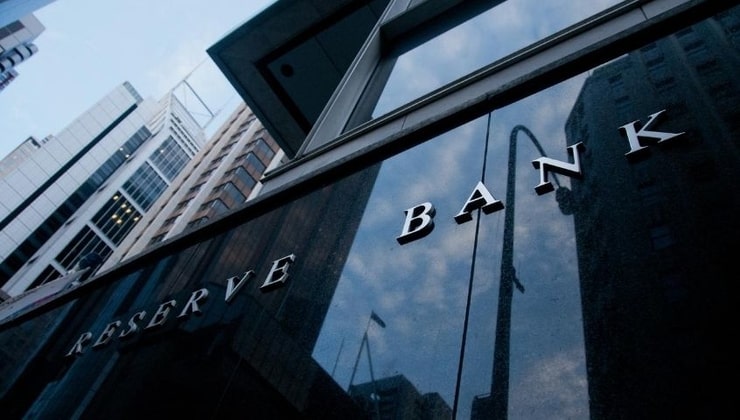CFD sind komplexe Instrumente und beinhalten wegen der Hebelwirkung ein hohes Risiko, schnell Geld zu verlieren.72.6% der Kleinanlegerkonten verlieren Geld beim CFD-Handel mit diesem Anbieter. Sie sollten überlegen, ob Sie verstehen, wie CFD funktionieren und ob Sie es sich leisten können, das hohe Risiko einzugehen, Ihr Geld zu verlieren.
AUDJPY, stocks, and the US election
If you have a look across markets, they seem to be optimistic for now. Risk currencies and US stocks have pushed higher as a blue wave and Biden victory increasingly becomes consensus. And you’re right in thinking that higher taxes and heavier regulation would usually be bad news for markets: but this COVID-19 election is different. The bullish case for markets from here is for government to step in and spend its way out of this crisis - and the democrats have shown they are willing to spend bigger than the GOP.
It’s not only the fiscal plan though. Importantly, the larger a lead Biden can carve out in polls, the less likely it is we’ll see a contested result, which would throw markets into chaos for weeks. The risk of a contested election is real: Trump has sown the seeds of mail-in voter fraud, a rigged election, and threatened to challenge the outcome if the democrats win.
To avoid a contested result and complementary market turbulence, investors need a clear win either way. It’s easier to challenge a close result than a landslide defeat. It just so happens that it’s the Biden camp carving a strong polling lead right now.
But the election is still over three weeks away and everything could change yet. The VIX remains fairly high at 26.36%.
USDJPY
USDJPY is a favoured vehicle to hedge against election risk, with the Japanese yen typically receiving a bid on safe haven flows ahead of an election and unwinding after. And this remains in play so far, with price holding the June descending channel on the daily chart.
Daily chart: USDJPY. Chart source data: Metaquotes MT5.
The forex pair may be at a turning point though, with price trading to the top of the channel and breaking the 5-day EMA (green) and 50-EMA (purple) on Wednesday as the JPY has weakened against the USD.
Keep a close eye here. As long as price holds the descending channel, JPY should continue to receive safe haven bids - an especially likely prospect if election newsflow flares up. Of course we’re near the top of the channel and an upside break is possible, however I question whether that would hold. I would expect that for safe haven JPY flows to unwind so soon, markets would need to be fairly certain of a certain outcome either way and after 2016, I’m not sure traders will be putting all their eggs in one basket just yet.
But let’s take the USD out of the equation and consider our safe haven JPY against the risk-sensitive AUD.
AUDJPY
Although markets are fairly calm and optimistic now, a lot can change in three weeks and there may yet be turbulence to come. Many fear a sell-off in stocks in the event of a contested result or even a divided government (where one party has the white house and the other has congress, creating legislative stalemate) - and traders have been seeking alternative vehicles to weather any potential downturn.
This brings high-beta currencies like the Australian dollar (AUD), and even the Norweigian krone (NOK), into the spotlight as they tend to move in tandem with US stock markets and broader risk sentiment. Then bring the JPY back into the equation, which tends to receive a safe haven bid when equities come under pressure, and we have a risk proxy with particular sensitivity to equities.
Daily chart: AUDJPY. Chart source data: Metaquotes MT5.
You can see that a short AUDJPY position performed well during the September equity slide, the AUD moving lower with equity markets and the JPY receiving a safe haven bid. Markets have stabilised in the last couple of weeks and AUDJPY has moved higher, trading above the September trend line this morning after a strong run in US stocks. I want to see a daily close above the trend line before I become bullish on this pair, but yesterday’s close above the 5-EMA (green), 20-EMA (blue), and 50-EMA (purple) is a good sign so far.
What’s next
For now, markets are optimistic as polls show a clear win from a party willing to spend big on the path out of this crisis. Of course three weeks is a long time in politics and a lot could change yet. If markets become cautious and equities buckle under pressure, AUDJPY may be the vehicle to express a view on where markets are heading.
Related articles
Bereit zu traden?
Es ist einfach, ein Pepperstone-Konto zu eröffnen. Stellen Sie Ihren Antrag innerhalb von Minuten, auch mit einer geringen Einzahlung. Beginnen Sie Ihre Reise mit Pepperstone noch heute.
Bei diesem Artikel handelt es sich um eine Werbemitteilung. Diese Information wurde von Pepperstone GmbH bereitgestellt. CFD sind komplexe Instrumente und beinhalten wegen der Hebelwirkung ein hohes Risiko, schnell Geld zu verlieren. Zwischen 74 % und 89 % der Kleinanlegerkonten verlieren beim Handel mit CFD Geld. Sie sollten überlegen, ob Sie verstehen, wie CFD funktionieren und ob Sie es sich leisten können, das hohe Risiko einzugehen, Ihr Geld zu verlieren. Zusätzlich zum untenstehenden Haftungsausschluss enthält das auf dieser Seite enthaltene Informationsmaterial weder eine Auflistung unserer Handelspreise noch ein Angebot oder eine Aufforderung zu einer Transaktion in ein Finanzinstrument. Pepperstone übernimmt keine Verantwortung für die Verwendung dieser Kommentare und die daraus resultierenden Folgen. Es wird keine Zusicherung oder Gewähr für die Richtigkeit oder Vollständigkeit dieser Informationen gegeben. Folglich trägt der Anleger alleinverantwortlich das Risiko für einzelne Anlageentscheidungen. Jede angebotene Studie berücksichtigt nicht das Investment spezifischer Ziele, die finanzielle Situation und die Bedürfnisse einer bestimmten Person, die sie empfangen kann. Sie wurde nicht in Übereinstimmung mit den gesetzlichen Vorschriften zur Erstellung von Finanzanalysen erstellt und gilt daher als Werbemitteilung im Sinne des Wertpapierhandelsgesetzes (WpHG).

